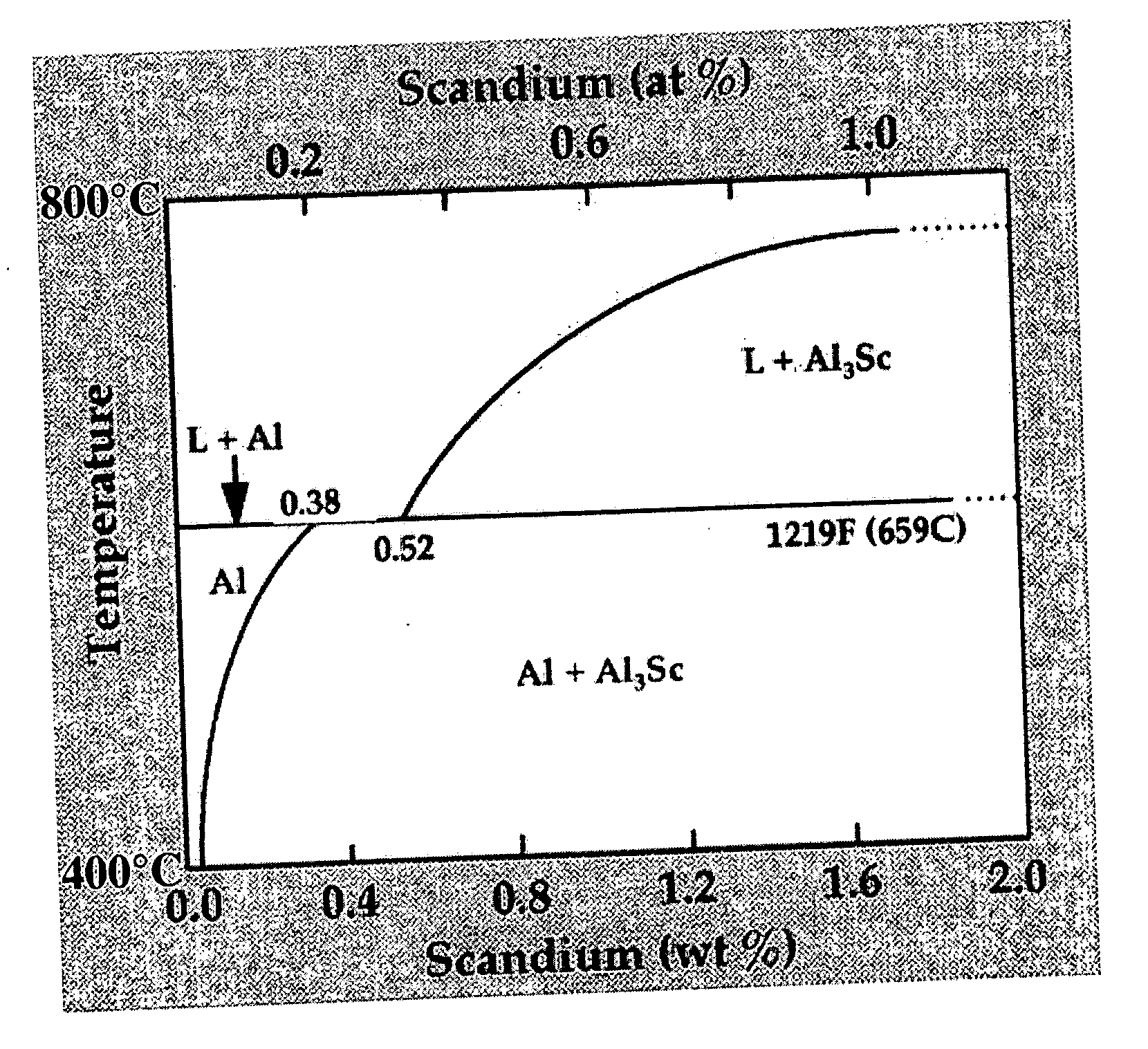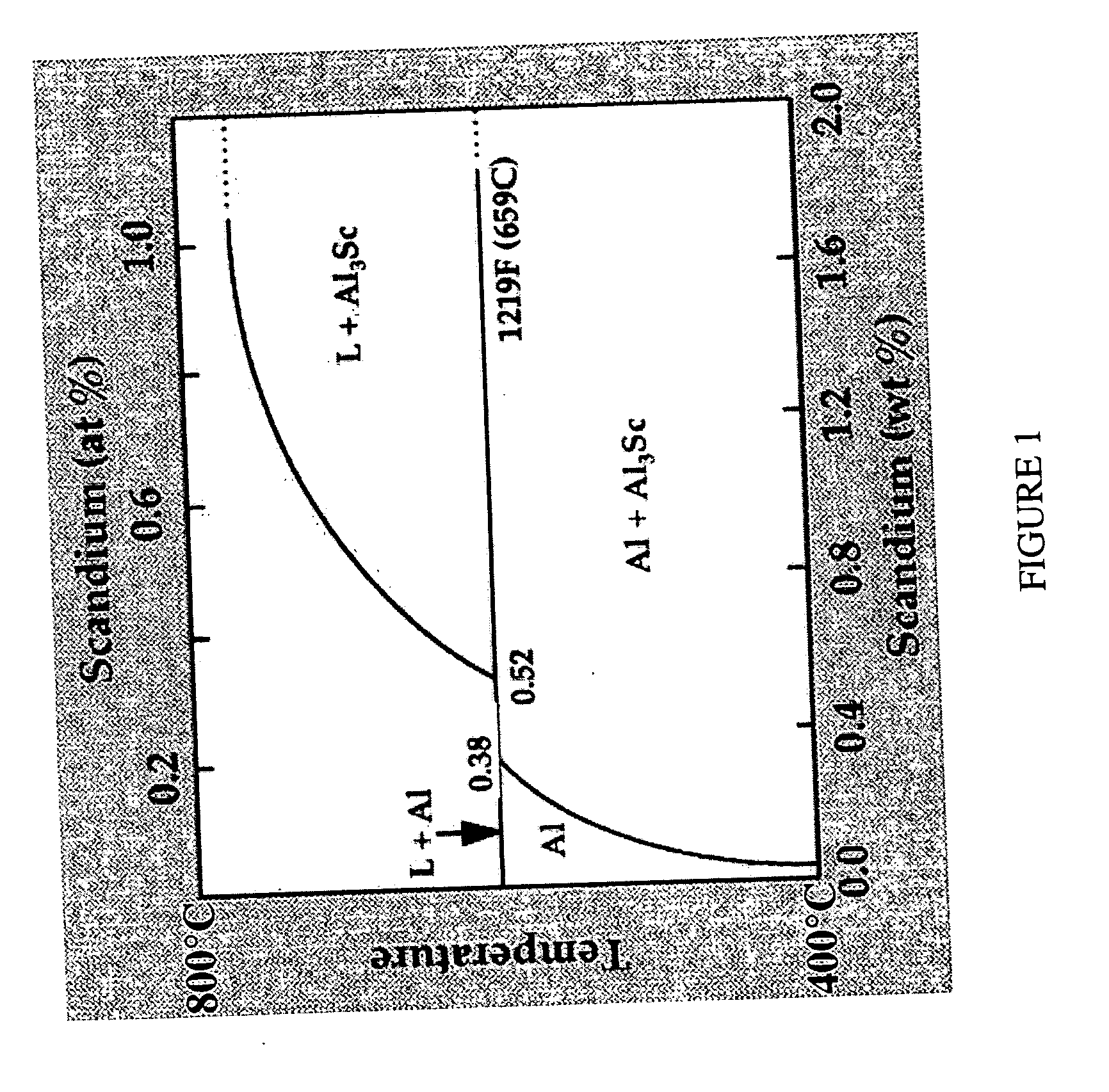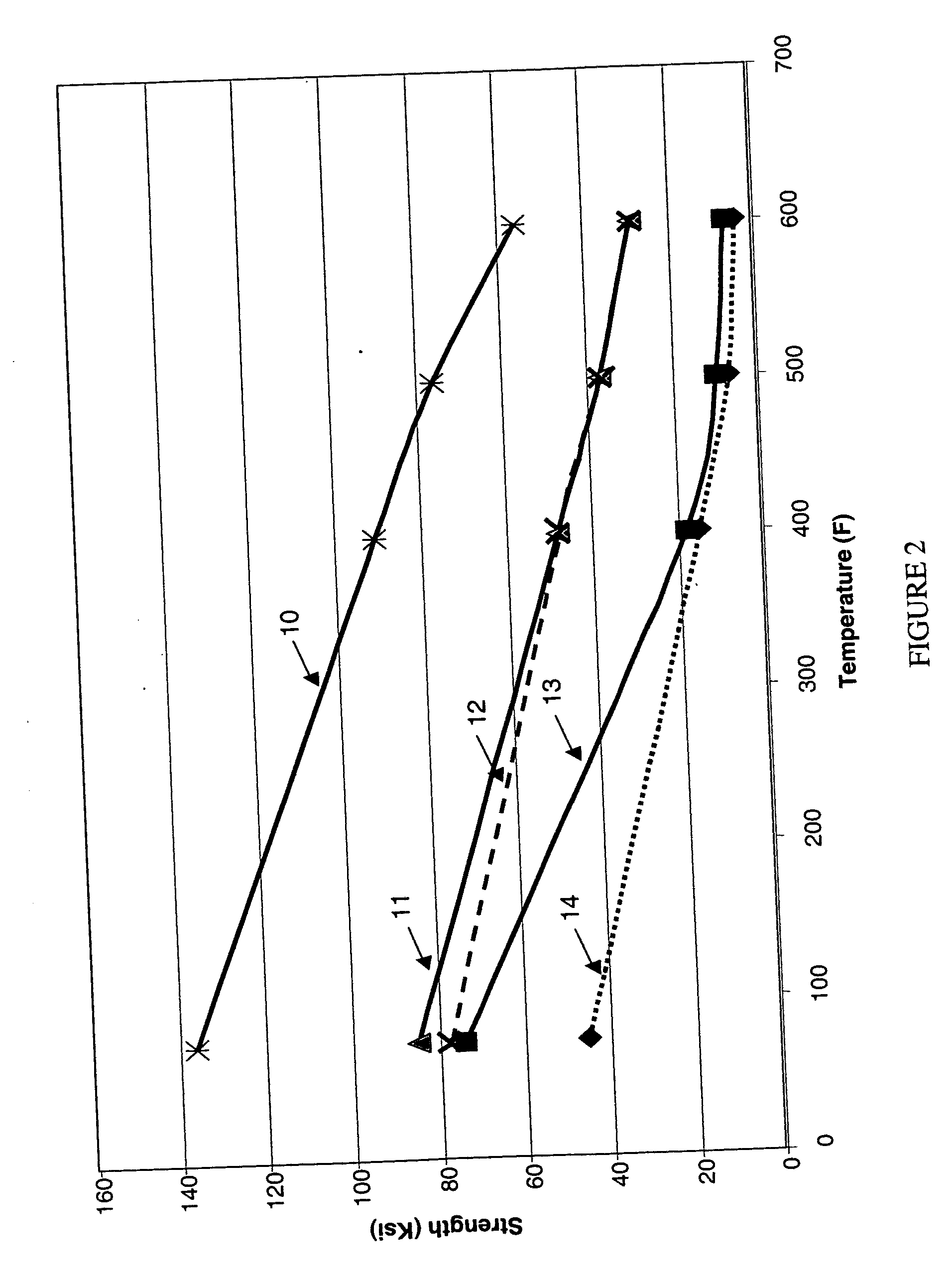High temperature aluminum alloys
a technology of aluminum alloys and high temperature, applied in the field of aluminum alloys, can solve the problems of low ductility and fracture toughness of alloys, limited use of aluminum alloys, and high temperature deformation of alloys, and achieve the effects of superior ductility, fracture toughness, and strength
- Summary
- Abstract
- Description
- Claims
- Application Information
AI Technical Summary
Benefits of technology
Problems solved by technology
Method used
Image
Examples
examples
[0088] Various embodiments of the following novel alloy compositions (in weight percent) were produced using various powder metallurgy processes: about Al-8.4Ni-2.15Sc-8.8Gd-2.5Zr, about Al-8.4Ni-2.15Sc-8.8Gd-1.5Zr and about Al-8.4Ni-2.15Sc-4.1Gd-5.4Y. The powder metallurgy processes used for producing these alloys consisted of ingot fabrication, inert helium gas atomization, hot vacuum degassing, vacuum hot pressing, and extrusion. Alloying elements were mixed together and melted in an argon atmosphere at about 2100-2300° F. (1149-1260° C.) for about 15-60 minutes to form ingots of the above-noted compositions, each having very low oxygen content. The ingots were then further melted in an argon atmosphere at about 2400-2600° F. (1316-1427° C.) for about 15-60 minutes, and were then atomized via helium gas atomization to form spherical powders that also had very low oxygen content. The powders were then sieved to about −325 mesh. Thereafter, the powders were hot vacuum degassed at a...
PUM
| Property | Measurement | Unit |
|---|---|---|
| temperatures | aaaaa | aaaaa |
| volume percent | aaaaa | aaaaa |
| temperatures | aaaaa | aaaaa |
Abstract
Description
Claims
Application Information
 Login to View More
Login to View More - R&D
- Intellectual Property
- Life Sciences
- Materials
- Tech Scout
- Unparalleled Data Quality
- Higher Quality Content
- 60% Fewer Hallucinations
Browse by: Latest US Patents, China's latest patents, Technical Efficacy Thesaurus, Application Domain, Technology Topic, Popular Technical Reports.
© 2025 PatSnap. All rights reserved.Legal|Privacy policy|Modern Slavery Act Transparency Statement|Sitemap|About US| Contact US: help@patsnap.com



